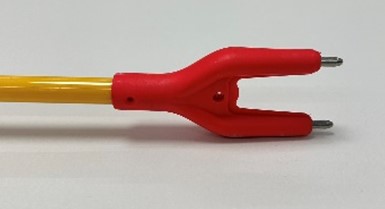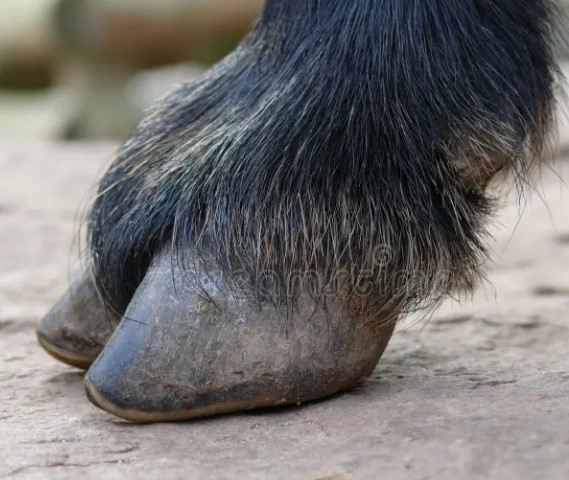Siberia will soon have its own cold-resistant breed of cattle

Siberian scientists have been working on breeding cold-resistant breeds of cattle for many years. According to the information of the Institute of Cytology and Genetics of the Siberian Branch of the Russian Academy of Sciences, today the first step in the implementation of this problem has been taken. A new study, jointly with the Royal Veterinary College (London, UK), reveals the mechanisms of common genetic adaptations in farm and wild animals in response to extreme climatic conditions.
As an object of study, the northernmost population of cattle was taken - the Yakut cow, which lives in a territory with a harsh climate and is able to tolerate ambient temperatures below 70 degrees Celsius. Interest in this breed is also dictated by the fact that scientists have not yet been able to study the full history of its origin. In addition, Yakut cattle have a unique gene pool and have not crossed with other populations of cattle, yaks, bison and other closely related species.
“In RUSSIA, huge territories have a low average annual temperature,” commented one of the participants in the research, a leading researcher at the Institute of Cytology and Genetics of the Siberian Branch of the Russian Academy of Sciences, Candidate of Biological Sciences Nikolai Yudin. - The production of MEAT and MILK in such conditions requires the development of local cold-resistant breeds. The mutation we discovered allows us to take the first practical steps in this direction.”
According to Denis Larkin, professor at the Royal Veterinary College, under whose direction the research is being carried out, the breakthrough significance of this work lies in the fact that scientists now know that convergent evolution at the nucleotide level also occurs in human-made animal breeds. “This means that individual breeds can acquire new properties that are not characteristic of their species as a whole,” he stressed.
The scientists also report that human and mouse studies have shown the involvement of mutations in the NRAP gene in a number of cardiomyopathies, diseases that alter the heart's ability to pump blood. They hypothesized that a similar mechanism helps the hearts of cold-hardy and deep-diving animal species, allowing them to continue pumping efficiently in cold weather and at depth.
Read together with it:
- "Ross" is not counting on luckThe Ross Breeding Farm, a municipal agricultural unitary enterprise, is one of the most successful and productive in the Volkovysk District. In 2021, a Holstein cow named Amazonka Plemzavoda won the title of best in Belarus. Her productivity reached 12,654 kg over 305 days, with a MILK fat content of 4.31%.......
- Record-breaking animals are being raised at the Ross breeding farm in the Volkovysk district.Photo by plemzavod-ross.by, September 26, MINSK . The Ross breeding farm has created a breeding herd of over 800 cows, 550 of which produce 10,000 kg or more of MILK per year. Viktor Zamirovsky, DIRECTOR of the municipal agricultural unitary enterprise, told the magazine "Ekonomika Belarusi" (Economy of Belarus), according to BelTA. The Ross Breeding Farm is one of the most successful and producti...
- About beshbarmak, money, meat, traditions, genetics, and breedingPIONERPRODUKT.by continues its interview series with the prominent Kazakhstani scientist Dastanbek Asylbekovich Baimukanov , recorded by his younger brother, Syzdyk Asylbekovich Baimukanov. The first part of the interview is titled: "A Story of Shepherds, Sheep, and Freedom ." We remind you that numerous articles on animal husbandry by Dastanbek Asylbekovich Baimukanov have been published on our p...
- New video on our channel: Results of crossing the Edilbai and the Kazakh Coarse-Wool sheep. Results on the scale. Powerful sheep in the pasture.The Edilbaev and Kazakh fat-tailed coarse-wool sheep are not just breeds, but a national treasure of Kazakhstan. In this video, you'll hear a frank discussion between scientists and practitioners about the future, breeding, mistakes, and why these sheep have become a symbol of endurance and strength. This video provides a detailed discussion of the development of the Edilbaev breed and the Kazakh ...
- The advanced farm of JSC "Gorodilovo" uses the work of scientists and rewards with a trip to the seaTopic newsHow knowledge of market conditions, achievements in genetics and modern technologies helped JSC "Gorodilovo" to become one of the best The President of Belarus expressed gratitude to agricultural workers in the MINSK region and Minsk district, as well as to the teams of six agricultural enterprises, including Gorodilovo JSC. This is not the first time the enterprise has received such a h...
- Buffalo Farming in Colombia: From Exotic Species to Golden OpportunityIn Colombia, the buffalo market has grown significantly in recent years, becoming an unrivaled alternative for cattle farmers. According to the ICA (National Institute of Agricultural Research), the buffalo population has increased by 60.1% over the past six years, from 336,417 HEAD in 2018 to more than 617,......
- Brazil faces a methane challenge: Sustainable livestock farming is key to mitigating global warming.This 6% increase over four years has raised concerns among environmental groups, who warn that the impacts can be mitigated if sustainable strategies are adopted in the agricultural sector. Livestock and methane: a crucial link Brazil must transform According to the report, enteric fermentation in cattle (gases produced by animals during digestion) was responsible for the emission of 14.5 million ...
- Argentina's Meat Exports Fall, But Domestic Prices Remain StableMiguel Schiariti, President of the Chamber of MEAT and Meat Industry and Commerce (CICCRA), provided a detailed overview of the situation in the Argentine meat sector, emphasizing that the decline in beef consumption is not due to a price problem, but to a lack of purchasing power among consumers. In an interview with radio station LU12 AM68......
- Russia's Permanent Mission Condemns EU3 Decision on Sanctions Against IranThe EU-3's decision to launch a mechanism to restore sanctions against Iran has no legal force, Polyansky said. He warned that a return to anti-Iranian restrictions could complicate international cooperation Dmitry PolyanskyRussia is disappointed with the decision of the EU-3 countries – Great Britain , Germany and France – to use a mechanism that restores all sanctions against Iran, said Dmitry P...





























































